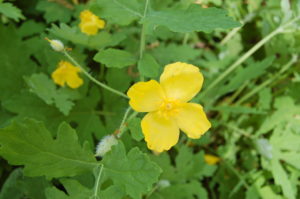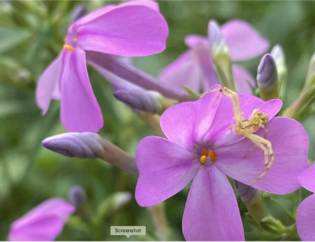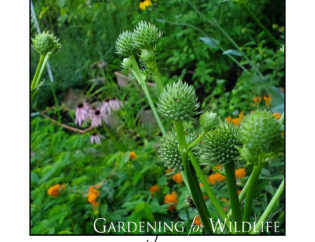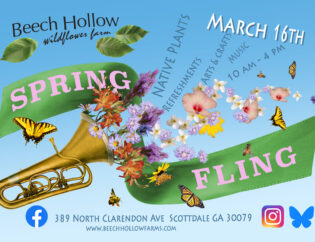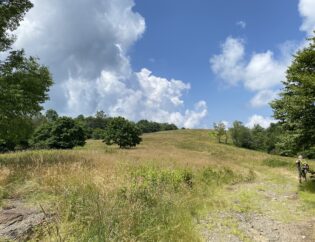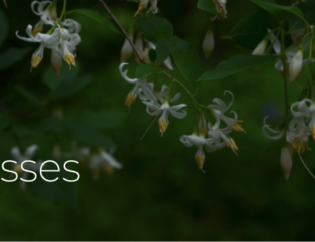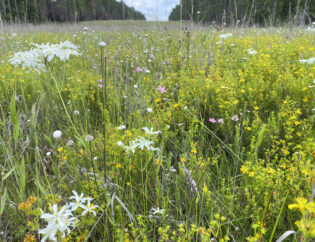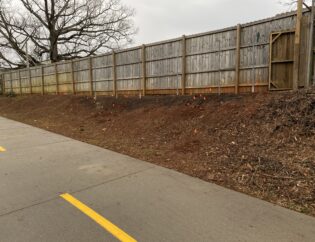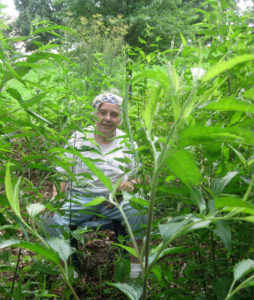
In 2005, Carol Vanderschaaf started the Freedom Park Bird and Butterfly Garden with Phil Edwards and the Dekalb Master Gardener Association along with Catharine Kuchar of the Audubon Society. Together, they initially planted a small selection of native plants and shrubs. The site is atop a small hill between a retaining wall and the PATH trail that runs through the park. Three large White Oaks in an east/west line, a north facing slope, a well mowed southern boundary, and several old driveway excavations make for a lot of niches with different conditions. In the following 13 years, the garden has expanded 3 times, and now contains over 40 different species of native grasses, herbs and shrubs, 2 bluebird nesting boxes and a bird bath. Many volunteers from the neighborhood, students from nearby Mary Lin Elementary, and other organizations have helped to install plants, remove invasives, control erosion, spread mulch and generally maintain the garden for the benefit of pollinators, birds, and other wildlife (including the human kind).
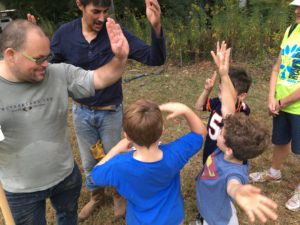
Care of the garden was passed from Carol to the staff at Beech Hollow Farm in 2015, and we are still working with any volunteers that care to help. Last fall we had had Cub Scout Troop 586 out to help pull invasive vines, and we are now coordinating with members of the Freedom Park Conservancy to hold regular volunteer days. The main issue facing the long term success of the garden is non-native, invasive plants out-competing the native plantings that nourish the birds, butterflies and bees. Seeds from the Bradford Pear trees that line the nearby golf course are continually deposited in the garden and sprout up
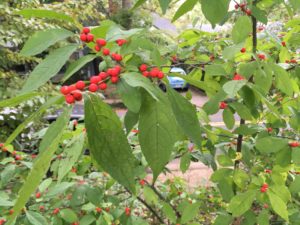
thorny little trees with leaves that no native caterpillars will eat. Porcelain berry vines climb over the native shrubs and rob them of sunlight, and the only bug that seems to eat them are Japanese beetles, which we don’t want to encourage with more free food. In lieu of natural insect controls, repeated pulling and cutting of these and other invasives keeps them in check and allows the natives a fair chance at sunlight and nutrients as they sacrifice leaves to hungry caterpillars that then feed (baby) birds or grow up to be pollinators.
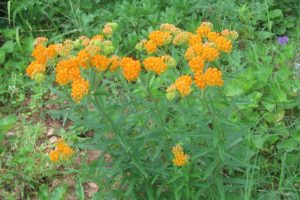
Volunteers and caring people are the reason that the garden exists and continues to thrive at the corner of North Ave and Candler Park Drive. Check it out if you should happen to be in the neighborhood. It’s not obvious from the street, but up close you’re almost always bound to see something blooming, hear birds calling in the trees overhead or frolicking in the birdbath, and see a few butterflies and bees sipping nectar in the shade. If you are interested in volunteering on a Sunday morning to help the garden grow, you can check our calendar or email pandra@beechhollowfarms.com for information about the next volunteer day.
